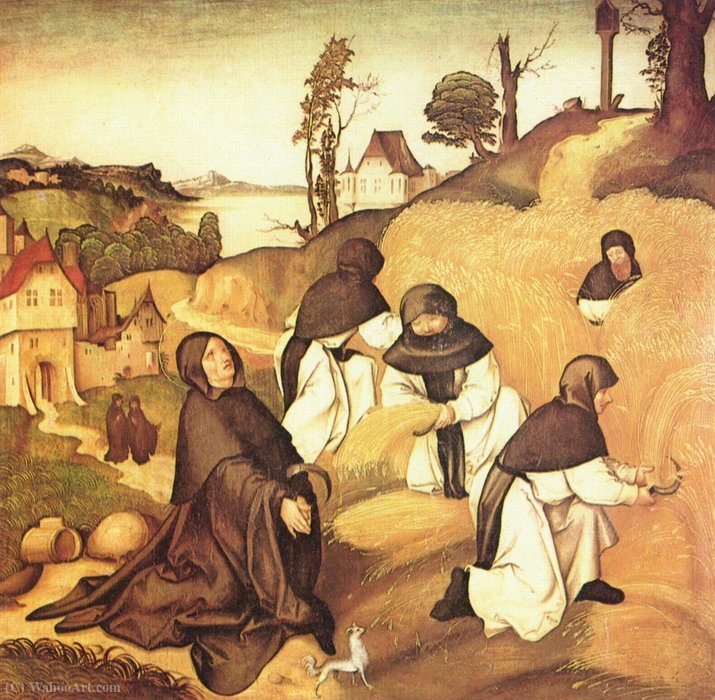“The 12th century liturgy of Jerusalem was immensely important in the newly created socio-cultural and sacral landscape. Unique rites were established and formed part of a large project aimed at transforming the post-Byzantine Muslim city of Jerusalem into the Latin capital of their Kingdom and a spiritual centre of the Christian world. How was this accomplished?
Following the First Crusade, the Church of the Holy Sepulchre and the Jerusalem patriarchate were appropriated by the new Latin ecclesiastical hierarchy, while the Greek-Orthodox clergy was relegated to a secondary position in the services at the church. In 1114 the secular canons residing at the Church of the Holy Sepulchre were reformed and became regular canons following the rule of Saint Augustine.
The other important shrine churches of the Kingdom of Jerusalem were also occupied by regular canons and most likely followed the practice of Jerusalem, as did the Hospitallers, the Templars and later the Carmelites. The new practices established in the Church of the Holy Sepulchre were thus widely influential. After the reform of 1114, the Church of Jerusalem was, furthermore, an instrument for propagating the policies and ideas of the reform papacy in the Holy Land.
The liturgy of Jerusalem (…) had initially depended on the random availability of liturgical books of diverse European origin. These combined to establish the Jerusalem practice, which naturally remained fundamentally Western European in character but nonetheless adopted local traditions. The challenges of devising the liturgical program (included, TN) (…) constructing a new liturgical language from the various usages in the West; choosing local Eastern traditions to be adopted and continued within the programme; Finding a balance between their enthusiasm for the terrestrial city of which they were finally in possession, and its emblematic image as the celestial city.
The establishment of a Latin liturgy in Jerusalem was thus a process of recreating and reformulating familiar texts and rituals, as has been shown in a number of recent studies of the Latin liturgy of Jerusalem. They illustrate ever more clearly the ritual resources of the religious, cultural and devotional milieu of Frankish Jerusalem.
That the texts and practices imported from the West were not the only source of inspiration informing the liturgy is evident in several ways. Local Byzantine cultic dispositions were reflected in the names of locally venerated saints preserved in the Latin Calendars of the Church of the Holy Sepulchre. The Frankish liturgy adopted some pre-crusade Eastern ceremonies, the most prominent being the celebration of the miracle of the Holy Fire, which continued to be celebrated but in a new Latin garb and drew a massive audience, as it still does today.
The process of liturgical development was to evolve alongside continued interaction with the local Oriental traditions and their representatives. It has been demonstrated that the local Oriental clergy operated alongside the Latin one in Jerusalem’s holiest shrines. This continuity was manifest especially on major feasts, but it can also be seen in places of shared veneration, for which we have growing evidence.(…)
Other examples of liturgical adjustment and awareness of innovation that have been noted are: the liturgical manuscripts from Jerusalem that clearly mark the occasions on which a distinction was made between what they call ‘old rituals’ and what they call new ones. The effort and thought that the clergy invested in elaborating their liturgy is not least reflected in their deliberations on whether and how to celebrate major events – as seen, for example, in the performance of the Visitatio Sepulchri on Easter morning – which are documented in the Ordinal of Barletta and other liturgical texts. They also faced the need to devise entirely new celebrations – famously, the Liberation Ceremony for 15 July – and solemn practices connected with the relic of the True Cross. These examples portray the religious ritual as a critical junction of tradition and change.
It thus seems fair to say that the Jerusalem liturgy established a conscious dialogue with the past, building on Western traditions as well as traditions inherited from the pre-crusade centuries, which posited ritual resources credited with the religious authority of the Early Christian origins.“
This blog quotes, with some minor adaptations, from “The ‘Holy Women’ in the Liturgy and Art of the Church of the Holy Sepulchre in Twelfth-Century Jerusalem” by Iris Shagrir (2017, in: The Uses of the Bible in Crusader Sources, ed. E. Lapina and N. Morton (Brill, 2017), pp. 455-475), source academia.edu. Illustration Church of the Holy Sepulchre cropped to approximately the area of the original church, photo Gerd Eichmann, source Wikipedia, CC BY-SA 4.0
Support TemplarsNow™ by becoming a Patron, tipping us or buying one of our Reliable Books

.jpg/1280px-Church_of_the_Holy_Sepulchre_by_Gerd_Eichmann_(cropped).jpg)

